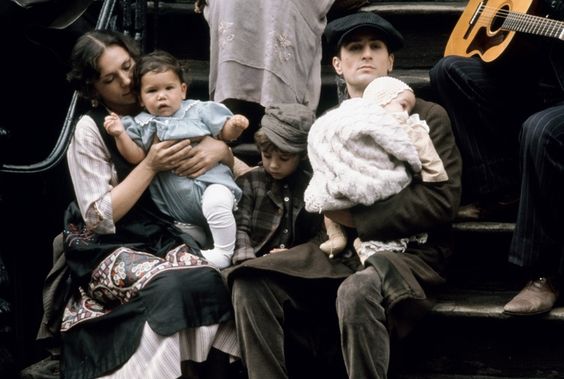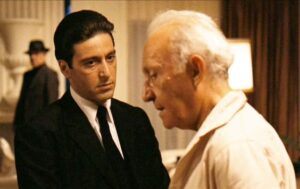
The continuing relevance of the Godfather Trilogy

Upon its 50th anniversary, much has been written about The Godfather and its sequels. Topics include its complicated and fascinating production history, the technical specs of the 4K remasters (which make the movies look and sound better than ever), and the first movie’s place in the pantheon of ’70s “Golden Age” cinema, something the new Paramount+ series The Offer reiterates often. But one of the qualities of a true classic is its continuing relevance.
Beyond being beautifully crafted artifacts of their time, do the Godfather movies have anything to say about American society and culture in the third decade of the 21st century? Have they, like Citizen Kane or Casablanca, retained their timelessness through ongoing thematic relevance or insights into human nature?
The Godfather, about an Italian New York crime family trying to maintain its position amid changing times and heavy competition from rival families, is a chronicle of America. It is a story about assimilation and immigration, about who belongs and who is made to feel as if they don’t belong, about who has the right to a path to the American dream, and who will be denied that path — or, at the very least, have that path made harder for them. It’s a movie about the nature of legitimacy, which the Corleone family and its patriarchs, Don Vito (Marlon Brando) and his son, Michael (Al Pacino), constantly strive for without ever quite attaining it. In this way, The Godfather reflects the same issues America struggles with today — who is allowed to feel as if they belong, who is excluded, who constitutes a “real” American.
The movie signals this with its first line of dialogue. “I believe in America. America has made my fortune,” says the first-generation Italian-American undertaker Bonasera (Salvatore Corsitto). His prosperity is a huge deal for an Italian American in 1946, when the movie is set. When Italians immigrated to the U.S. in waves at the turn of the century, they were considered illegitimate, second-class citizens and worse. For the undertaker to have become a financial success in the short time between generations is a miracle for him. When he comes to Don Vito to ask him to punish the thugs who attacked his teenage daughter, his rage partially stems from being disrespected after feeling as though he had “made it” as an American. Of course, his success is partially due to the fact that his Italian American countrymen like Don Vito are willing to do violence on his behalf to achieve and maintain their share of the American dream.
The idea that American power and idealism had been corrupted by violence was widely accepted by 1972, at the tail end of the Vietnam War, especially in the light of public knowledge of the atrocities committed there by American military and political leaders. In this context, it make sense that the brutality in the movie is shrugged off as doing “business,” and why Coppola subtly equates America and violence throughout the film. For example, when the Corleone enforcers execute the driver, Paulie (John Martino), in the famous “Leave the gun, take the cannoli” scene, the Statue of Liberty is visible in the background. Later, when the eldest Corleone heir, Sonny (James Caan), is gunned down at a tollbooth, a baseball game is heard playing on a radio. In another scene, the Corleone “capo” Clemenza (Richard Castellano) casually equates Michael’s plans to do murder with with his war heroism abroad. “Now you need to be a hero for the family,” he says, as though it were the same thing.
Finally, late in the film, Coppola opens a scene of a meeting of the New York mafia’s “Five Families,” with a shot of an American flag hanging outside the boardroom where they meet. This signals the real transition between the generations, one that is explored in greater depth in The Godfather Part II. The days of hashing out deals in tiny restaurants and around the kitchen table are over. It’s all becoming global and even the human touch of crime — the intimacy of a garroting, for example — is being rendered invisible. It’s all done by strings pulled in high places now.
